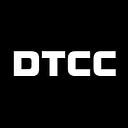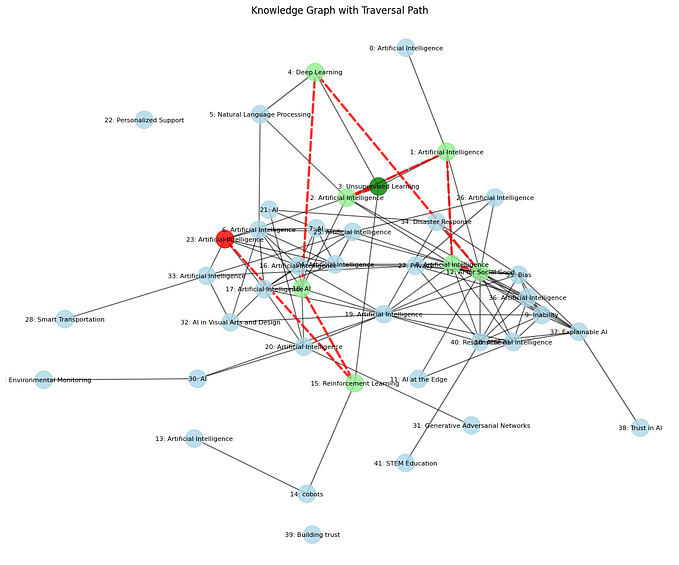T+1: How the Shortening of the USA Settlement Cycle May Impact APAC
Special from DerivSource for DTCC Connection
The global financial industry is closely watching the U.S. as it prepares to shorten its standard settlement cycle for securities from T+2 to T+1 in 2024.
While T+1 settlement will come into force in the U.S. on May 28, 2024, its effects are being felt around the world. Recent research conducted by ValueExchange at the start of 2023, showed that many challenges remain with regards to implementation, regardless of location. The survey showed that T+1’s strongest impact is not in North America, but instead, with global custodians in Europe and the Asia-Pacific (APAC) region. These regions have been facing the steepest challenges, and in APAC, specifically, funds and derivatives are encountering the greatest obstacle.
Related: Early Indicators Point to T+1 Testing Success
DerivSource recently spoke with Nellie Dagdag, Managing Director, Marketing and Communications for Asia Pacific at DTCC, to discuss how the move to T+1 in the U.S. could impact investors and intermediaries in APAC and how market participants in the region should start preparing for this change now.
Q: What are the critical post-trade processes that must be completed by the May 2024 deadline, when the U.S. will move to T+1?
ND: The U.S. SEC’s New Exchange Act Rule 15c6–2 states that broker-dealers and their counterparties need to complete certain parts of the post-trade process — specifically, the allocation, confirmation, and affirmation processes — as soon as technologically practicable and no later than by the end of trade date. The Amended Advisers Act Rule 204–2 also requires registered investment advisers that are parties to contracts under Rule 15c6–2 to make and keep records of confirmations received, and allocations and affirmations sent, each with a date and time stamp.
To be able to meet these requirements, the U.S. T+1 Industry Working Group has recommended a 9PM ET T+0 deadline for affirmations, while DTCC has recommended completing allocations by 7PM ET T+0 in order to meet the 9PM ET affirmation deadline. To achieve T+1, firms must consider how they can accelerate their allocation and affirmation processes.
Brokers and custodians that miss the affirmation deadline face additional post-trade costs to submit Delivery Orders directly to the US depository, the Depository Trust Company.
“FIRMS NEED TO PERFORM THOROUGH IMPACT ANALYSES AND IDENTIFY WHAT NEEDS TO BE DONE IN TERMS OF SYSTEMS, PROCESSES, AND PEOPLE READINESS.”
Q: Can you describe the changes required for allocating trades in a T+1 environment?
ND: Under T+2, trade allocations are typically carried out at the end of the trading day or the following day, but this will have to be done much earlier in a T+1 environment. Trades on a Friday will pose a particular challenge to APAC investors because they would have to complete the post-trade processing on a Saturday (Friday evening EST) unless they can pass the work to colleagues in US time zones. Investors are responsible for timely allocations, even if their middle and back-office operations are outsourced. In fact, some firms have teams in other time zones to cover more hours in the day and allow extra processing time. Other firms, particularly in the APAC region, will likely look to trade at the fund level, in line with common practice for markets where trading and/or settlement are at individual investor or fund level (also known as ID markets), rather than at the omnibus level as it is done in the U.S.
In addition, some firms place orders in block but already provide standing allocation instructions to their brokers when the order is placed. Other firms place orders at the fund level but have an arrangement with their brokers to combine different fund-level executions to get an average price for all of their funds. These flexible arrangements will depend on the investor’s relationship with the broker and the broker’s automation capability.
However, there is no single industry approach to how allocations are handled, which highlights the importance for each investor to discuss how best to manage the allocation process under T+1 with their brokers and custodians.
Q: Why is increased automation important for T+1?
ND: With a reduced time to settlement, post-trade automation has become critical. According to the Value Exchange survey, roughly 37% of all T+1 activity is focused on process automation, with the most significant area for investment dedicated to moving to an automated or outsourced affirmations model.
For U.S. institutional trades, the affirmation process takes place before the settlement instruction is sent to the depository. In contrast, in APAC markets, affirmations are generally embedded within the depository system, in what is known as pre-settlement matching between the local broker and the local custodian (acting on behalf of the investor). This is a key distinction that APAC investors need to account for when planning for the U.S. move to T+1. As a result, it is critical that APAC investors discuss the optimum affirmation arrangement suitable for them under T+1 with their custodians.
Related: T+1 is Looming: What Do Hedge Funds Need to Do to Be Ready?
Q: What is the state of industry readiness for T+1?
ND: The Value Exchange survey showed that T+1 represents a challenge for the entire organization, as it strongly impacts six separate areas of a firm’s activities — the middle office, funding, settlement, fails management, securities lending and corporate actions.
Foreign exchange (FX) is a big issue for APAC investment firms. Many firms are concerned about receiving unfavourable FX rates from their agent banks, especially when the base currency is weaker than the dollar and there is not enough time to shop around. However, this is a relationship matter between investors and their banks and there is no common industry solution. Investment firms need to negotiate bespoke solutions with their banks when it comes to FX.
While the situation may have improved by now, the survey in Q1, 2023 showed that only a very small percentage of global firms (9%) considered themselves fully prepared, while 42% were in the process of implementing changes and 41% of firms were still researching what needed to be done. The report found that only 46% of the firms expect to be ready in time for the May 2024 deadline.
“DESPITE THE UPFRONT COSTS ON TECHNOLOGY AND OPERATIONAL CHANGES, AUTOMATION AND STRAIGHT-THROUGH PROCESSING ARE MUST-HAVES UNDER A T+1 REGIME.”
Q: Given that time is not on our side, how should firms jumpstart their preparation for T+1?
ND: With less than a year to go until the T+1 rules come into effect, all firms (investors, custodians and broker dealers) must begin preparations and testing now. For its part, DTCC, is focused on outreach and education, partnering with the industry to promote preparations and readiness.
One key finding from the ValueExchange survey was that many firms did not know what they needed to do or how the new rules would impact their operations. To best prepare, firms need to perform thorough impact analyses and identify what needs to be done in terms of systems, processes, and people readiness.
Some firms are leveraging DTCC Consulting Services to aid in this process. DTCC is heavily involved in U.S. T+1 discussions and preparations. Our expert consultants bring deep industry experience and decades of post-trade knowledge to support firms along every step of their T+1 readiness journey, from impact analysis to project design and execution, all the way through to post-implementation remediation.
“APAC firms should not underestimate the enormous task ahead of them when it comes to preparing for the new rules.”
Q: What is the impact of T+1 on firms in APAC?
ND: Firms in the APAC region will face many of the same T+1 challenges as organizations in other parts of the world, including how to prioritize the T+1 effort versus other regulatory reforms, and how to manage competing resources and funding. However, in some ways, APAC firms could be better placed to handle the changes than their peers in the U.S. or elsewhere.
First, firms in the region are already accustomed to very strict deadlines and penalties. Whereas in the U.S., trades failing settlement is not unusual and mainly results in financial repercussions, in Asia-Pacific markets, a failed settlement is a regulatory matter and could lead to firms being suspended from trading. As a result, APAC firms typically have a very different mindset around trade failures. In addition, many APAC markets have high levels of retail investor participation and trade failures could create a negative ripple effect. APAC firms are used to working quickly to meet deadlines.
Secondly, as previously discussed, many of APAC markets are ID markets, where allocation instructions are already advised when the order is placed, and some APAC investors continue to trade at the fund level when they trade in the U.S.
The third advantage for APAC firms is that the U.S. Dollar is a predominant currency and widely available, so sourcing it should not be a significant problem. It is easier to source than the Indian Rupee, for example.
Q: What is the immediate task ahead for firms to get ready for T+1?
ND: APAC firms should not underestimate the enormous task ahead of them when it comes to preparing for the new rules. Each firm needs to build its own checklist of what it needs to do to get ready — there is no one-size-fits-all approach and firms will be impacted differently depending on their specific circumstances. Most importantly, firms need to look at where they can remove manual processes and increase their level of automation, especially in the post-trade space. Despite the upfront costs on technology and operational changes, automation and straight-through processing are must-haves under a T+1 regime. On balance, it will bring about significant risk reduction and operational cost savings, and for some firms, the savings on margin requirements under T+1 could more than offset the upfront costs.
Related: Preparing Mutual Funds Clients for T+1 Impact
Working with a consultancy firm can make preparing for T+1 easier, as it reduces the need to have a dedicated team. Firms will still need to have internal people heavily involved in the project, but a consultant can provide an efficient framework and manage the project execution.
DTCC has unique visibility into firms’ operational performance and is able to collate CTM data, and the Depository Trust Company and DTCC’s subsidiary, National Securities Clearing Corporation information to perform deep analysis on what firms need to do. This, combined with DTCC’s in-depth knowledge of post-trade processes developed over the last 50 years, makes the DTCC a valuable partner for firms looking to comply with the new rules.
The most important thing is not to wait — the deadlines are fast approaching and if firms trade in the U.S. market, they will be impacted either directly or indirectly. Firms operating under an outsourced model may even have to change the way they work with their providers. At the same time, other markets will soon move to T+1 as well, creating an additional advantage for firms that move to T+1 now. Firms must advance their T+1 preparations now.
This article first appeared in DerivSource on July 25, 2023.





